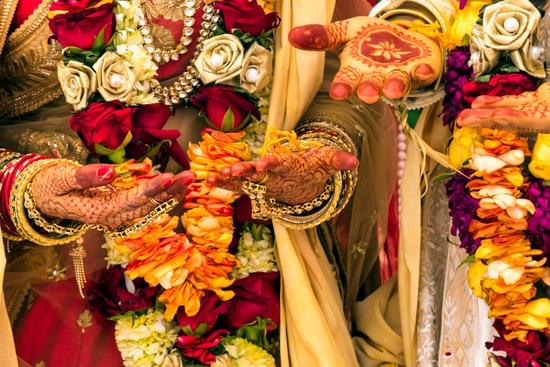Planning a wedding involves countless details, from choosing a venue to selecting the perfect dress. One crucial aspect of wedding dress shopping is understanding how long the process takes, from design to final fitting. In this article, we will delve into the essential factors that impact the timeline for creating a wedding dress and provide tips for brides on planning ahead.
When it comes to wedding dresses, timing is everything. Understanding how long wedding dresses take to be made and fitted is vital for brides who want to ensure a seamless and stress-free experience. From selecting the right designer to considering customization options, there are numerous factors that can influence the timeframe for creating the perfect wedding gown.
In the following sections, we will explore the various elements that affect the time frame for creating a wedding dress, including customization options, fabric choices, alterations, and more. We will also outline the standard timeline for a wedding dress from initial consultation to final fitting and provide guidance on planning ahead to avoid any potential delays.
Whether you are opting for a customized design or considering rush orders, knowing how long wedding dresses take is crucial in ensuring that your dream dress is ready in time for your special day.
Factors That Affect the Time Frame
When it comes to the process of creating a wedding dress, there are several factors that can influence the timeline for completion. Understanding these factors is crucial for brides who are planning their wedding and need to know how long their dress will take to be made and fitted.
Customization
One of the biggest factors that can impact the time it takes to create a wedding dress is customization. Custom designs typically require more time and attention to detail compared to off-the-rack options.
Brides who have a specific vision for their dress, from unique embellishments to non-traditional silhouettes, should expect a longer production timeline. It’s important for brides to communicate their customization needs clearly with their designer or boutique to ensure that the necessary time is allocated for these special touches.
Fabric Choice
The type of fabric chosen for a wedding dress can also affect the time frame for its creation. Certain fabrics may require more intricate construction or delicate handling, adding extra time to the production process. Additionally, if a bride selects a fabric that is not readily available, there may be additional lead time needed to source and acquire the material. Considering fabric choice early in the dress selection process can help avoid delays later on.
Alterations
Another factor that influences the timeline for creating and fitting a wedding dress is alterations. Once the initial construction of the dress is complete, there may be additional time needed for alterations to ensure a perfect fit. Brides should plan ahead for potential alteration appointments and allow enough time in their overall wedding dress timeline for any necessary adjustments.
Understanding how these factors can impact the timeline for creating a wedding dress is essential for brides who are in the planning stages of their big day. By factoring in customization needs, fabric choices, and potential alterations, brides can better estimate how long their wedding dresses will take to be made and fitted.
Standard Timeline
When it comes to planning for your wedding, one of the most crucial aspects is ensuring that your wedding dress is ready in time for the big day. Understanding how long wedding dresses take to be made and fitted is essential for any bride-to-be. The timeline can vary depending on different factors, so it’s important to have a clear understanding of what to expect.
The typical timeline for a wedding dress from the initial consultation to the final fitting can range from 6 to 8 months. This timeframe allows for various stages of the dressmaking process, including design consultation, fabric selection, multiple fittings, and final alterations. However, it’s important to note that this timeline can be longer or shorter depending on certain factors.
Customization options play a significant role in determining how long it takes to create a wedding dress. If you opt for extensive customizations such as unique embroidery or hand-beading, these intricate details will require additional time to execute.
Additionally, the choice of fabric can also impact the timeline, as certain types of fabric may require more time and precision to work with. It’s essential to discuss these customization options with your designer and factor in the additional time needed for these personalized touches.
| Factors | Impact on Timeline |
|---|---|
| Customization Options | Extended timeline due to intricate details and special requests |
| Fabric Choice | Certain fabrics may require more time and precision which affects turnaround time |
| Alterations | The number and complexity of alterations needed after initial fitting affects completion date |
Customization Options
When it comes to creating a wedding dress, customization options can have a significant impact on the amount of time it takes to complete the gown. From intricate beadwork to custom embroidery, brides have endless possibilities for personalizing their wedding dress. However, these customizations can add extra time to the overall process.
Detailing Customization Options
Customization options for wedding dresses can range from simple alterations in silhouette or neckline to more elaborate changes such as adding sleeves, incorporating lace details, or choosing a unique color palette. Each customization option requires additional time for the designer to implement into the design and construction of the dress.
Complexity and Detail
The complexity and detail of the chosen customization options will ultimately determine how long it takes to create a wedding dress. Intricate details like hand-sewn beading or delicate lace appliques may require several weeks of meticulous work, while simpler alterations can often be completed in a shorter timeframe.
Communication With Designer
Clear and effective communication with your chosen designer is essential when exploring customization options for your wedding dress. It’s important to discuss realistic timelines for the completion of any custom details and ensure that both parties are in agreement on the expected timeframe for the creation of the dress. By establishing open communication from the outset, brides can avoid potential delays and ensure that their desired customizations are incorporated within a reasonable timeline.
Ultimately, while customization options allow brides to create a truly unique and personalized wedding dress, it’s important to factor in the additional time required for these customizations when planning ahead for your wedding day attire.
Choosing the Right Designer
When it comes to choosing the right designer for your wedding dress, it’s important to consider their ability to work within your desired timeline. Whether you have a specific date in mind for your wedding or you simply want to ensure that your dress will be ready in time for fittings and alterations, finding a designer who can meet your timeline is crucial.
Here are some tips for selecting a wedding dress designer who can work within your desired timeframe:
- Research Their Production Time: Before committing to a designer, inquire about their typical production time for wedding dresses. Some designers may have longer lead times due to the intricacy of their designs or the volume of orders they receive. It’s essential to find a designer whose production time aligns with your wedding date.
- Inquire About Rush Order Options: If you have a shorter timeline for your wedding dress, ask potential designers if they offer rush order options. Some designers may be able to accommodate expedited orders for an additional fee, ensuring that your dress is ready in time for your big day.
- Look for Flexibility: When discussing timelines with potential designers, look for flexibility and willingness to work with your specific needs. A designer who is open to accommodating your timeline and understands the importance of meeting deadlines can provide peace of mind during the dress creation process.
By considering these factors when selecting a wedding dress designer, you can feel confident that your chosen designer will be able to create a beautiful gown within your desired timeline. Remember that communication is key, so be sure to discuss your schedule and expectations upfront to avoid any delays in the dressmaking process.
Rush Orders
When it comes to rush orders, timing is crucial. Most bridal shops and designers have specific timelines for rush orders, so it’s essential to inquire about this option as soon as possible. It’s also important to keep in mind that rush orders often come with additional fees. These fees can vary depending on the designer or shop, but they are typically higher than standard fees due to the expedited nature of the order.
Another consideration when opting for a rush order is the limited customization options. Since time is of the essence, there may be restrictions on the level of customization that can be done for a rush order dress. This means that brides who choose this option may need to be flexible with their expectations and open to choosing from existing designs rather than creating a completely bespoke gown.
By exploring the option of rush orders, brides with a tight timeframe can still find their dream wedding dress without having to compromise on style or quality.
| Rush Order Considerations | Details |
|---|---|
| Timing | Specific timelines for rush orders; inquire early |
| Additional Fees | Higher fees than standard orders due to expedited nature |
| Customization Options | Limited customization due to time constraints |
Alterations and Fittings
After the wedding dress is completed, the next step in the process is alterations and fittings. This is an essential part of ensuring that the dress fits the bride perfectly on her special day. The time needed for alterations and fittings can vary depending on a few factors, such as the complexity of the alterations needed and the schedule of the seamstress or tailor.
Factors that can affect the time needed for alterations include:
- The complexity of the alterations required
- The availability of the seamstress or tailor
- The number of fittings required
It’s important to book your alteration appointments well in advance to ensure that there is enough time to make any necessary adjustments. Keep in mind that multiple fittings may be needed to achieve the perfect fit, so plan accordingly. Additionally, it’s crucial to communicate with your seamstress or tailor about your timeline and any specific deadlines you may have.
When scheduling your alteration appointments, consider any other pre-wedding events or travel plans that may impact your availability. By planning ahead and allowing enough time for alterations and fittings, you can minimize stress and ensure that your wedding dress looks flawless on your big day.
Remember that alterations are a crucial part of the wedding dress process, so be sure to allocate enough time in your overall wedding planning timeline for this important step. With proper planning and communication, you can rest assured that your wedding dress will fit like a dream when you walk down the aisle.
Tips for Planning Ahead
In conclusion, the timeline for creating and fitting a wedding dress is an important factor that every bride should consider when planning for their big day. Knowing how long wedding dresses take to be made and fitted can help avoid potential delays and ensure that the dress is ready in time for the wedding.
Factors such as customization, fabric choice, and alterations can all impact the time frame for creating a wedding dress, so it’s crucial for brides to plan ahead and select the right designer who can work within their desired timeline.
When considering customization options, brides should be mindful of the additional time needed to create a unique dress that reflects their personal style. Selecting the right designer who is experienced in delivering quality work within a specific timeframe is also essential.
Rush orders may be an option for brides with a tight timeframe, but it’s important to weigh the pros and cons before deciding on this route. Additionally, allowing ample time for alterations and fittings after the dress is completed can help ensure a perfect fit on the big day.
To plan ahead effectively, brides should start early by researching designers and booking consultations well in advance of their wedding date. It’s also important to communicate openly with the designer about any specific design requirements or timelines from the onset. By being proactive and taking these necessary steps, brides can minimize potential delays and stress related to their wedding dress timeline, allowing them to fully enjoy their special day with confidence and peace of mind.
Frequently Asked Questions
How Far in Advance Do You Need Wedding Dress?
The ideal timeframe to order a wedding dress is about 6-9 months before the wedding. This allows for enough time for the dress to be made, delivered, and alterations to be completed if needed.
How Long Does It Take to Get a Dress From David’s Bridal?
The time it takes to get a dress from David’s Bridal can vary depending on the style and size of the dress. It typically takes around 12-20 weeks for a dress to be ordered and delivered, so it’s important to plan ahead.
How Long Should You Give for Wedding Dress?
When it comes to wedding dresses, it’s recommended to give yourself at least 9-12 months before the wedding date. This gives you plenty of time to find the perfect dress, have it made or ordered, and ensure that any necessary alterations are completed with ease and without rushing.

I have been involved in marriages for over 20 years helping couples and singles understand more about them.





